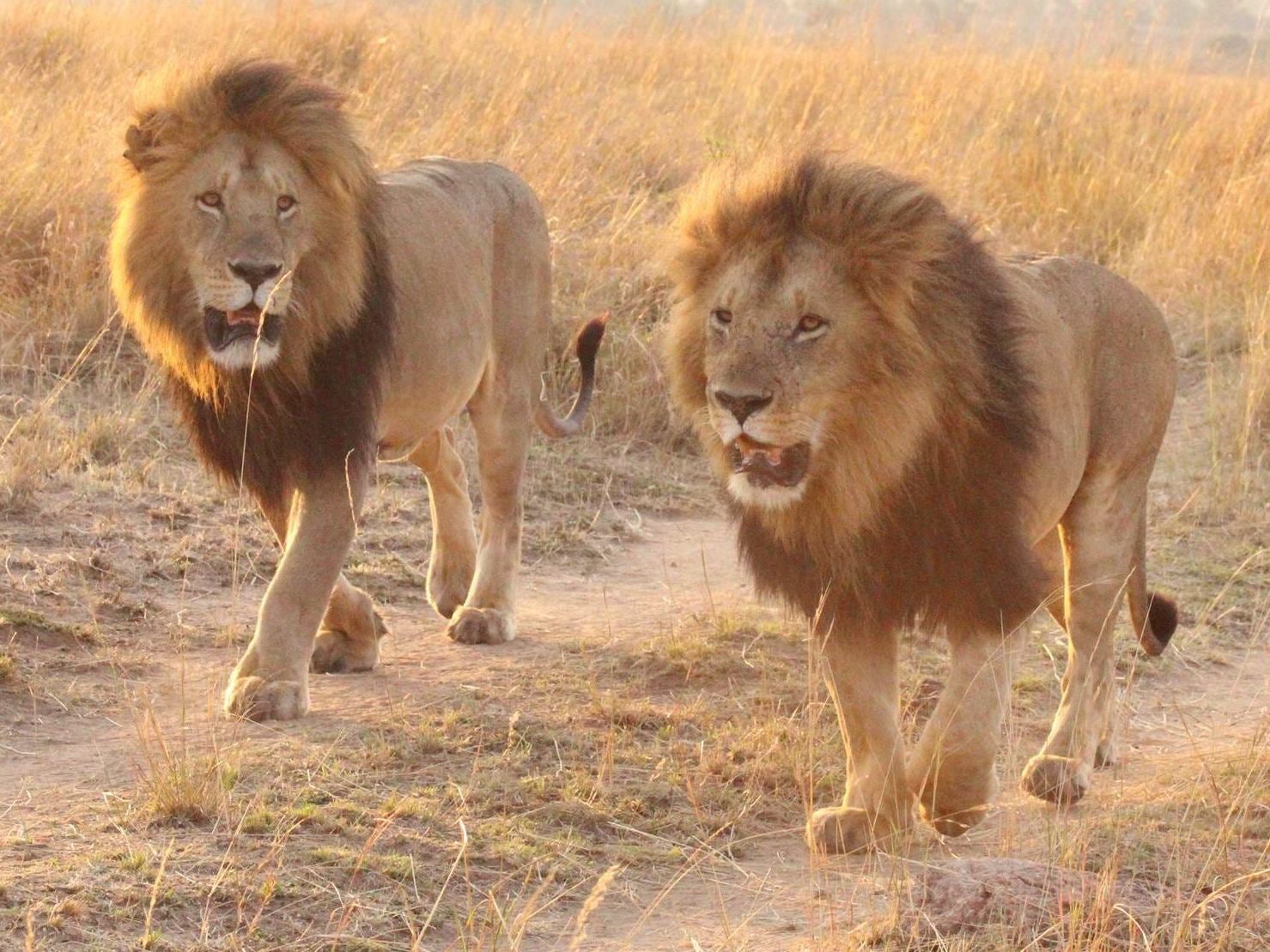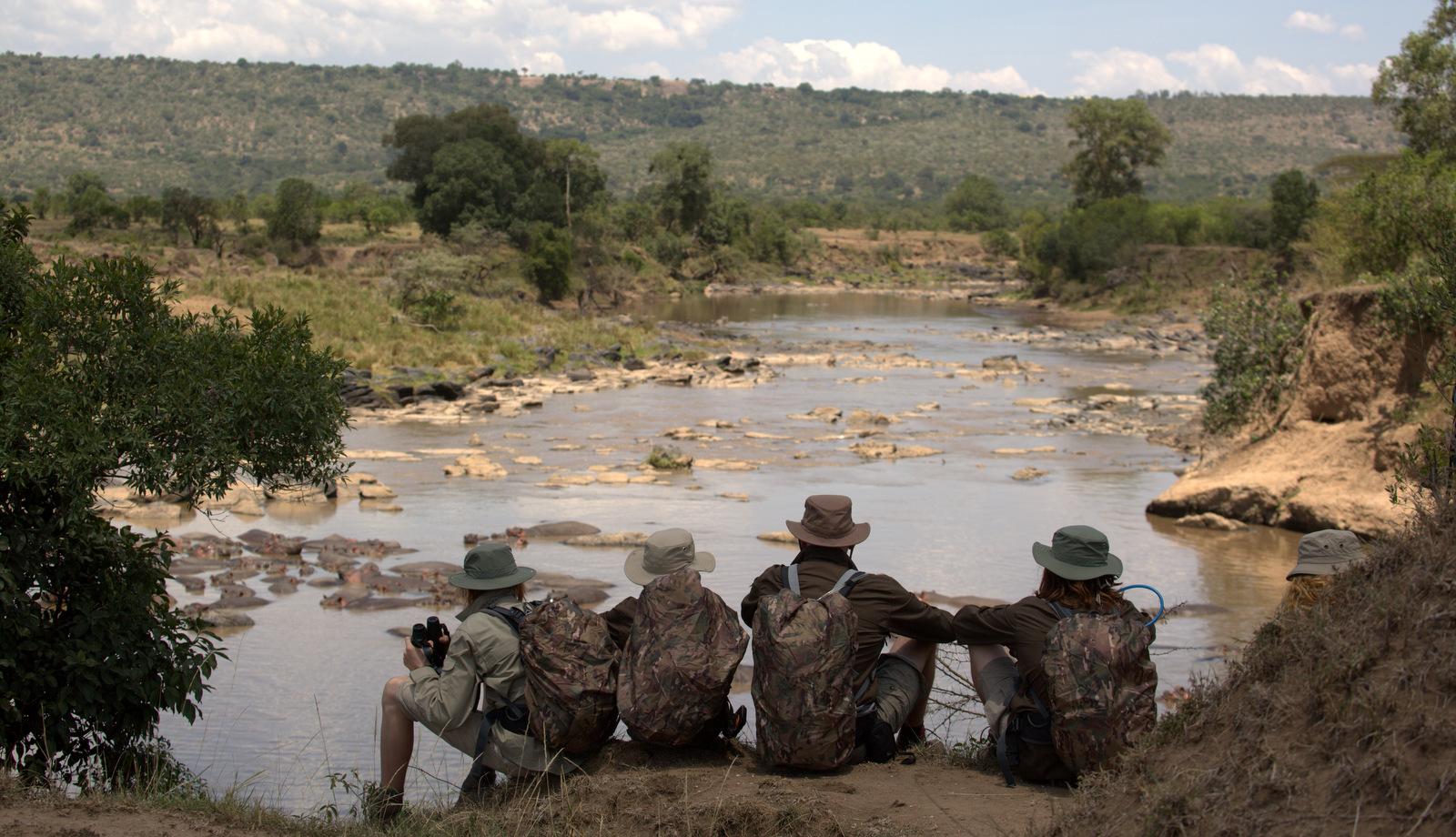What it’s like to walk through Kenya’s Maasai Mara with lions for company
86 kilometres, one big African landscape and many, many predators. Lizzie Pook takes the ultimate walking safari

Your support helps us to tell the story
From reproductive rights to climate change to Big Tech, The Independent is on the ground when the story is developing. Whether it's investigating the financials of Elon Musk's pro-Trump PAC or producing our latest documentary, 'The A Word', which shines a light on the American women fighting for reproductive rights, we know how important it is to parse out the facts from the messaging.
At such a critical moment in US history, we need reporters on the ground. Your donation allows us to keep sending journalists to speak to both sides of the story.
The Independent is trusted by Americans across the entire political spectrum. And unlike many other quality news outlets, we choose not to lock Americans out of our reporting and analysis with paywalls. We believe quality journalism should be available to everyone, paid for by those who can afford it.
Your support makes all the difference.There is something uniquely terrifying about finding fresh lion tracks while walking in the bush. Everything gets very quiet. Each rustle of foliage sends crackles of adrenalin darting throughout your body; each sound carried by the soft breeze makes sweat needle in your armpits, the crook of your elbows, the small of your back.
I’m on foot in the Maasai Mara, where I’m spending four days traversing four different conservancies using just my legs as part of Asilia’s new Adventures offering. There are no vehicles. No luxury bush breakfasts. Instead, I’ve been walking for up to seven hours a day in the oven-like African heat, camping alongside riverbeds, in dense tangled forest and, at one point, in marshy swampland filled with boisterously loud toads.
My guide is Roelof Schutte – an Afrikaner with icy, wolf-like eyes and the ability to make aardvark dung just as exciting as a coalition of hungry cheetah on the prowl – and we’re joined by Rakita Shololo, an elderly Maasai (he estimates he’s somewhere in his mid-to-late-seventies) with a face gullied by deep wrinkles and a gentle, calming demeanour. Rakita’s from the hunter-gather Dorobo tribe, who are best known for strolling up to huge prides of lions and stealing their kills from fresh under their noses (YouTube it. Seriously.) I’m in good hands, that’s for sure, but fresh pug marks in the mud mean everyone is on high alert.
Suddenly, a burst of cinnamon fur explodes from the thicket beside us. “Lioness! On the hunt!” hisses Roelof, and gestures for me to duck down behind a dead acacia tree. Rakita is just ahead of us, about 10m from the lion, who is now stalking an impala heading straight in our direction. She sees us and freezes. Slowly, Rakita gets to his knees and lowers his whole body so he is lying flat on the ground. The two eye one another as I peer through the desiccated branches. The lion cocks her head; I notice teats swinging heavy and bloated below her body. It dawns on us: she’s got cubs. And as we all know, nothing’s fiercer than a mother protecting her children.

Lions have been something of a theme for our trek, which has taken us straight into the path of some of Africa’s most dangerous animals. We’ve had huge prides surrounding our camp in the dead of night, roaring to one another as we set out each morning under the swell of bruise-coloured clouds. We’ve even seen them devouring wildebeest carcasses, blood spilling on the horizon as we look on goggle-eyed through our binoculars. Thankfully, this particular female doesn’t seem to fancy taking on three human beings today, and she turns and skulks deftly back into the bush.

I’ll be honest. I’d always thought of walking safaris as short pockets of terror that punctuate the more relaxing game drives offered by most camps. But spending so much time out in this incredible landscape is beginning to rewire my thinking. Each day, as we strike out across vast, open plains pockmarked with wild fig trees, we startle hyenas out of their sleeping spots. Wildebeest grunt, belch and even give birth around us, and tiny bat-eared foxes poke their heads out of their dens as we pass. As we push through thorny acacia groves and sweep through leafy valleys, we scour the trees for old leopard kills and keep our eyes peeled for the huge horns of a lone male buffalo (definitely the biggest danger to us) rising up out of the long, thick grass.

Spending time with elephants on foot is, it turns out, a peacefully poetic thing. As is watching two young male giraffes fight gently with their necks (a behaviour they would most surely have abandoned if we pulled up next to them in a noisy vehicle). What’s not quite so relaxing is walking straight into a wallowing hippo – the only option when that happens is to beat a hasty retreat and hope it hasn’t seen you.
Rakita carries only a rungu (a wooden throwing baton) and a large seme knife tucked into a battered leather scabbard at his waist. Roelof, on the other hand, is armed with a precautionary heavy duty rifle. But I’m reassured to hear he has only ever had to fire it once – a warning shot over the head of a huge matriarch elephant that was charging resolutely in his direction.

But this safari is not all about the big creatures. As we walk, Roelof points out “mouse highways” and piles of elephant dung that have been pillaged by hungry baboons and frenzied mongooses. While resting our blistered feet, we gaze down upon termite mounds being raided by armies of solider ants – tiny cities under siege. Rakita plucks sour plums from the bushes, presenting them to us like jewels, and we spend quiet moments pondering tiny terrapins floating in just-filled puddles. If this isn’t mindfulness, I don’t know what is.
Each day as I pause to catch my breath (which is often), I let the sounds of the bush wash over me: spider-hunting wasps that sound like heavy duty cargo helicopters as they pass; noisy “thick-knee” birds whose chirps sound like the wheeze of a rundown car battery. At night, the rains that fall from raven-black clouds pummel my tent like a thousand tiny fists. Thunder rolls around the valley like steel drums, and sheets of lightening illuminate the vast, eerie landscape.

But the most invigorating aspects of my walk are not the knee-deep river crossings or the close calls with big cats. Instead, it’s the visits we make to some of the conservation projects working in and around the Mara. When we drop into the Mara Elephant Project, muddied and sweat-soaked, we learn about new tracking technologies being implemented to prevent human/wildlife conflict. We’re shown rusty piles of snares and spears used to persecute these animals, and try – with a wheeze of lungs – to lift huge elephant-tracking collars above our heads. A trip to the Mara Predator Conservation Programme HQ shows us how each individual lion in the Mara is ID’d by its whisker spots, and how gaining the trust of the surrounding communities is crucial in conserving this fragile land and the animals that thrive here.

Because we are, of course, on someone else’s land. Many of the conservancies that orbit the world-famous Maasai Mara National Reserve – such as the Naboisho, Mara North, Lemek and Ol Chorro conservancies I’ve trekked through – work in tandem with the local people. In many of these conservancies, tourism companies rent the land off these rightful owners, meaning they can still keep cattle, they don’t lose access to their own property and they are given a monthly income. It’s a conservation model that’s flourishing, and one we bear in mind constantly while out on foot. “When we walk, we don’t leave tyre tracks, we don’t burn diesel, we don’t make noise,” says Roelof. He’s right. I don’t think I’ve ever felt more immersed in a single environment on any of my travels. And knowing we’re protecting it by covering it on foot is even more rewarding.

I’m left feeling sunburnt, soggy and, as hackneyed as it sounds, humbled by the trip I’ve just taken. When it comes to safaris, it really doesn’t matter whether you’ve got a fancy lodge with a private plunge pool. Who cares about wifi on tap and state-of-the-art Land Rovers? Get out on foot and you’ll feel like you’ve really got under the surface of this remarkable landscape.
Travel essentials
Africa Odyssey offers Asilia’s Mara conservancies walking safari from £4,480 per person, based on four people travelling inclusive of an overnight in Nairobi, as well as transfers, internal flights and international flights.
Kenya Airways operates daily flights to Nairobi from London Heathrow from £462.
Join our commenting forum
Join thought-provoking conversations, follow other Independent readers and see their replies
Comments